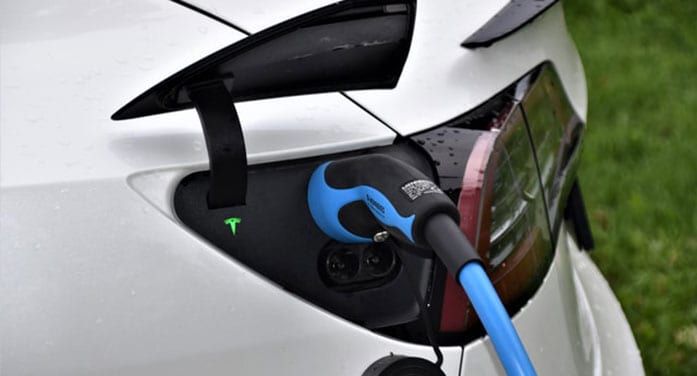Batteries do the heavy lifting to store excess solar energy on power grids for use after sundown, but to operate, they also rely on pricey elements like platinum.
University of Alberta researcher Matthew Labbe would rather leave the precious metals to the jewellers by using cheaper materials to tweak a disposable battery commonly used in hearing aids.
Known as a zinc-air battery, the long-lasting device has much bigger potential, said Labbe, a PhD candidate in the Faculty of Engineering.
“Zinc-air batteries could really excel at reducing the cost of storing renewable energy, and that could also apply to electric vehicles and even portable electronics.”
They have several advantages over the lithium-ion version, he noted.
Using low-cost zinc metal and oxygen to produce electricity, the battery is inherently affordable, can store more energy and is safer than flammable lithium-ion batteries.
The challenge is finding a cheaper alternative to the fine, high-performance metals like platinum that are used to make the catalyst – the substance that sparks a chemical reaction in a battery.
With a cheaper catalyst, zinc-air batteries become a promising alternative to the lithium-ion batteries that currently power large-scale storage grids.
Though other bugs still need to be worked out, eliminating the cost factor is one of the biggest hurdles to making zinc-air batteries viable, Labbe said.
Labbe is working with manganese and iron to create a less costly catalyst. Both elements are plentiful in the Earth’s crust and abundantly available.
Using a layering technique, he’s coating the surface of the battery’s electrode with catalysts containing oxides – chemical compounds from the two metals – and he’s starting to see results.
Building on earlier U of A research that showed manganese oxide could be used as a catalyst, Labbe and his colleagues were the first to discover the chemistry needed so iron oxide could also be used.
Zapping taxpayers won’t validate green energy by Mark Milke
There is no proof that the underlying renewables technology is viable
Though not quite as effective as platinum, the oxides do work as catalysts, and Labbe continues to refine the process. “The chemistry isn’t quite there yet, so we’ll need to work on it to reduce the energy losses more.”
The oxides are also effective in helping the rechargeable battery maintain its performance, he says.
“So far, we can retain over 90 per cent efficiency after 200 recharge cycles, meaning it will have a longer lifetime and avoid having to be replaced. It’s important to have that stability if it’s going to be suitable for widespread use.”
The battery could be ready for mainstream use within 10 to 15 years, Labbe believes.
“If zinc-air batteries are successful as grid-scale energy storage, you could see them used to store renewable energy generated by wind and solar farms, and they could also be used by households to store energy produced by solar panels, rather than selling the energy back to the grid.”
Improving the function of grid-scale storage is key in moving the shift to renewable energy forward, he added.
“Discoveries like this are key to bridging that gap.”
Labbe’s work is supported through funding from Future Energy Systems, a cross-disciplinary research and teaching network at the U of A working to develop innovations for energy transition. It’s also supported by the Natural Sciences and Engineering Research Council of Canada and is based in the labs of professors Ken Cadien and Douglas Ivey in the Department of Chemical and Materials Engineering.
| By Bev Betkowski
Bev is a reporter with the University of Alberta’s Folio online magazine. The University of Alberta is a Troy Media Editorial Content Provider Partner.
The opinions expressed by our columnists and contributors are theirs alone and do not inherently or expressly reflect the views of our publication.
© Troy Media
Troy Media is an editorial content provider to media outlets and its own hosted community news outlets across Canada.

